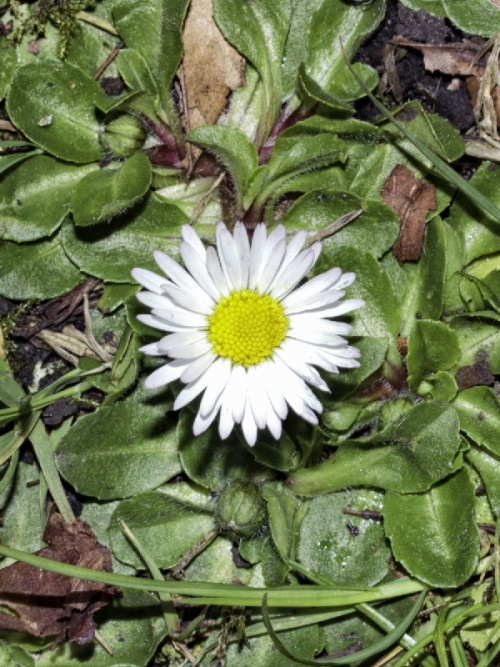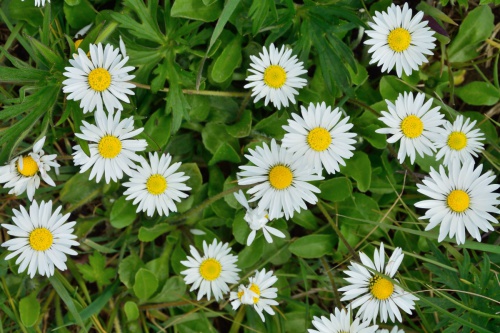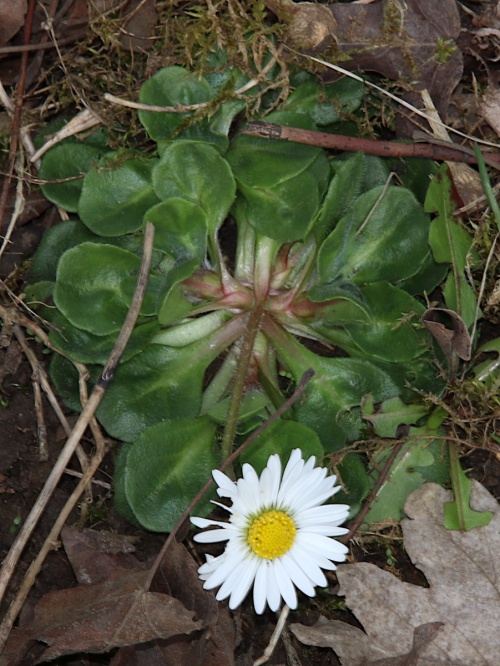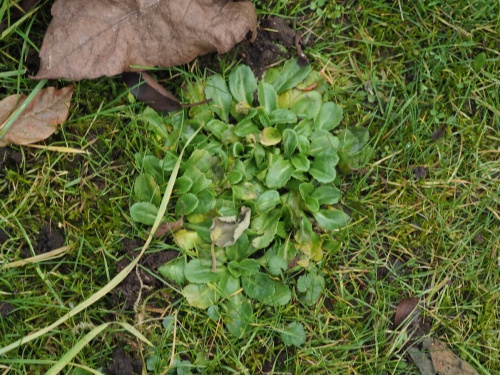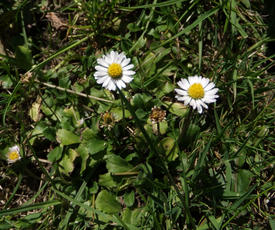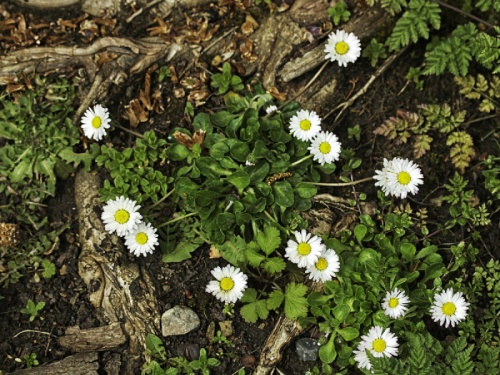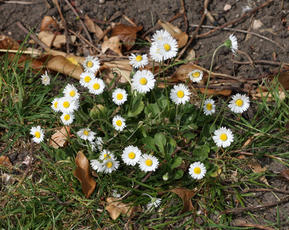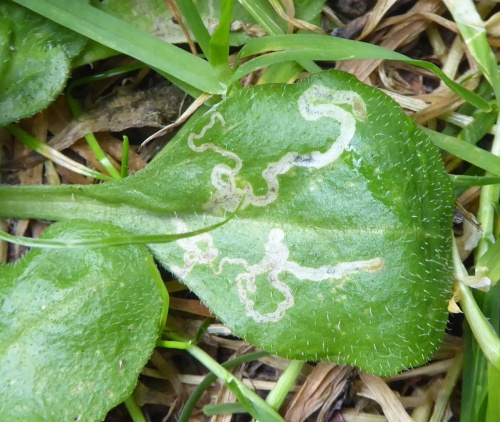Daisy - Bellis perennis
Low hairy plant with leaves in a basal rosette. Flowerheads with a yellow disc and numerous narrow white rays. 15 to 30 mm solitary on long slender stalks, the rays often tipped with red or flushed with purplish red beneath.
Short grassy habitats, lawns etc.
Flowers nearly all year round.
Perennial.
Very common throughout Britain.
Very common in Leicestershire and Rutland. In the 1979 Flora survey of Leicestershire it was found in 596 of the 617 tetrads.
Leicestershire & Rutland Map
Enter a town or village to see local records
MAP KEY:
Yellow squares = NBN records (all known data)
Coloured circles = NatureSpot records: 2020+ | 2015-2019 | pre-2015
UK Map
Species profile
- Common names
- Daisy
- Species group:
- Wildflowers
- Kingdom:
- Plantae
- Order:
- Asterales
- Family:
- Asteraceae
- Records on NatureSpot:
- 619
- First record:
- 21/09/1998 (Anthony Fletcher)
- Last record:
- 21/04/2024 (axon, kaye)
Total records by month
% of records within its species group
10km squares with records
The latest images and records displayed below include those awaiting verification checks so we cannot guarantee that every identification is correct. Once accepted, the record displays a green tick.
In the Latest Records section, click on the header to sort A-Z, and again to sort Z-A. Use the header boxes to filter the list.
Latest images
Latest records
Liriomyza pusilla
The larvae of the Agromyzid fly Liriomyza pusilla create irregular but linear mines on the upper surface leaves of Daisy (Bellis perennis). The mine winds across the leaf, often crossing over itself. Small leaves may have a secondary blotch at the end of the mine. Frass, when visible, is in short pearl-like strings. Pupation takes place outside the mine.


